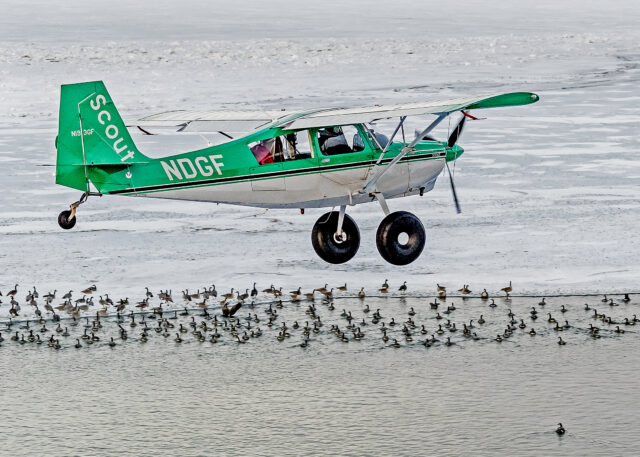Guest Post: Some choose to tough out the winter

Guest post from North Dakota Game & Fish outreach biologist Doug Lier.
The early arrival of winter likely had many North Dakota snowbirds questioning if they should have left before Thanksgiving. The following wave of snow and cold through Christmas and New Year’s may have sealed the deal for some of not returning until well after Easter.
As much as a cold, snowy and dark season can frustrate me, I still don’t see myself heading south for winter and I’m not alone. I’ll admit, that like a lot of people, I was hoping the beautiful October weather would carry into November and December, but that proved wishful thinking.
Like many thousands of people, ducks and geese felt the same this year as the Game and Fish Department’s annual midwinter waterfowl survey in early January indicated only about 29,000 Canada geese in the state.
Andy Dinges, department migratory game bird biologist, said a low count was expected this year for the same reasons explained earlier. Substantial snowfall and cold temperatures in November and December preceded the survey.
“We’ve had well above average snowfall already, especially in the central part of the state where most of our birds typically winter along the Missouri River System,” Dinges said. “Much of this area had received over 50 inches of snow before the survey, which has made access to waste grains difficult for birds and overall wintering conditions have been poor for waterfowl.”
In addition, Lake Sakakawea iced over on Dec. 18, which was one of the earliest dates for freeze up in recent years. In four of the last 10 years, the lower portion of Sakakawea has still had substantial open water in early January and needed to be completely surveyed by air.
During the recent midwinter survey, an estimated 24,400 Canada geese were observed on the Missouri River, and another 4,400 on Nelson Lake in Oliver County. Dinges said after summarizing the numbers, an additional 5,900 mallards were tallied statewide, most of which were recorded on Nelson Lake.
The 10-year average (2013-22) for the midwinter survey in North Dakota is 112,200 Canada geese and 16,500 mallards.
Also of note, this survey isn’t just specific to North Dakota as all states in the Central Flyway participate in the midwinter survey during the same time frame, to reduce the possibility of counting birds more than once.
While this year’s numbers were down, it’s proof we’re not alone and another indication the early arrival of winter was hard on more than people.
When will they return?
I’ll keep my eyes and ears open for the first hearty people and geese to return. Hopefully, it’s earlier rather than later.




